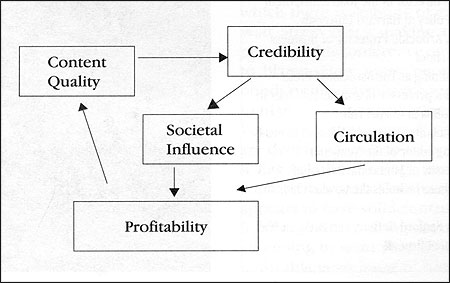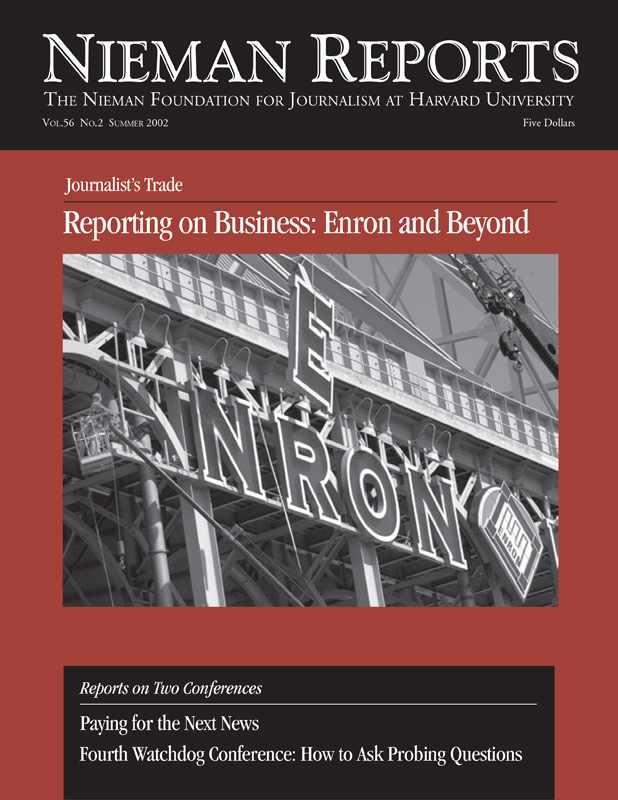Creating a Different Message About Quality
Philip Meyer, a journalism professor at the University of North Carolina at Chapel Hill and former reporter and market researcher for Knight Ridder, is working on creating a model that news organizations might use to send different messages to Wall Street and its investors. He spoke about this at the conference.
Phil Meyer: If I can find a better number than quarterly earnings—something that has more predictive power of newspaper or media success—what are my chances of getting Wall Street to pay attention to it?
Tom Wolzien: Quarterly reports keep everybody honest. So the issue is how much emphasis is placed on the quarter, not whether to do it. But you can bury a hell of a lot more in six months than you can in three, and you can bury even more in 12 months than you can in six. So I think that the issue is an orientation to the use of the quarterly numbers rather than the elimination of them.
Meyer: Suppose I could give you figures that are collected only every year or every two years or every three years but that show that, over the long run, media that are the most trusted by their audiences make the most money. Would folks on Wall Street pay attention to that?
Wolzien: Yes, I think so.
Meyer: In that case, I’ll do it.
The Quality Project
On Meyer’s Web site (www.unc.edu/~pmeyer), the following text accompanies the graph below.
Good journalism has always been the product of tension between profit making and social responsibility. But there are recent signs that the struggle is getting out of balance as publicly held companies defer to the short-term demands of the investor community. One problem is that the costs of community-serving journalism are easy to see while the benefits are not. The Quality Project aims to correct this imbalance by finding ways to measure quality and track its benefits to the bottom line.
Our model is one articulated by Hal Jurgensmeyer, a Knight Ridder executive in the 1970’s, who argued that a newspaper’s main product is neither news nor information but influence. It creates two kinds of influence, he said: societal influence, which is not for sale, and commercial influence, which is for sale. But the two are closely related because it is the societal influence that gives value to the commercial influence.
Published views of investment analysts suggest that they employ a much simpler model: A newspaper is a platform for delivering advertising to eyeballs. Their criterion for evaluating the platform is cost per eyeball.
With resources assembled from the John S. and James L. Knight Foundation, New Directions for News, and the Knight Chair in Journalism at the University of North Carolina, Chapel Hill, we are seeking the widest possible collaboration in developing empirical testing of the influence model.
For a progress report about ongoing related projects and readings or to share ideas, go to Meyer’s Web site and click on the Quality Project.



